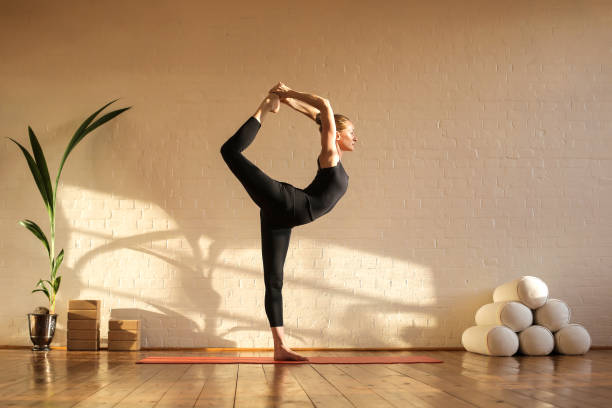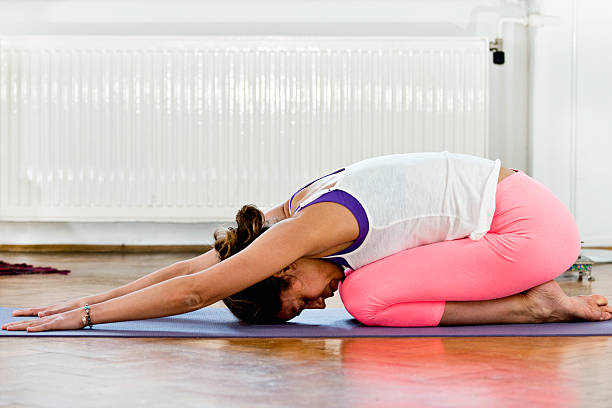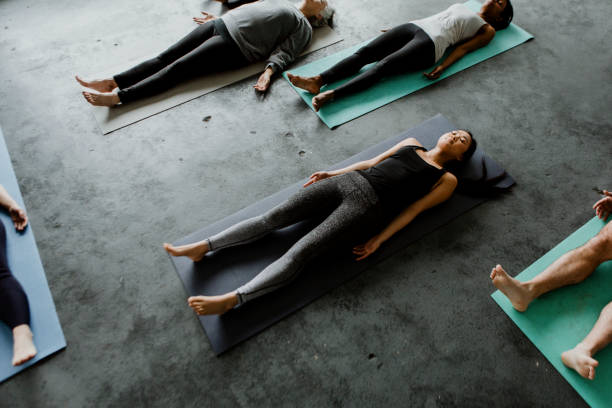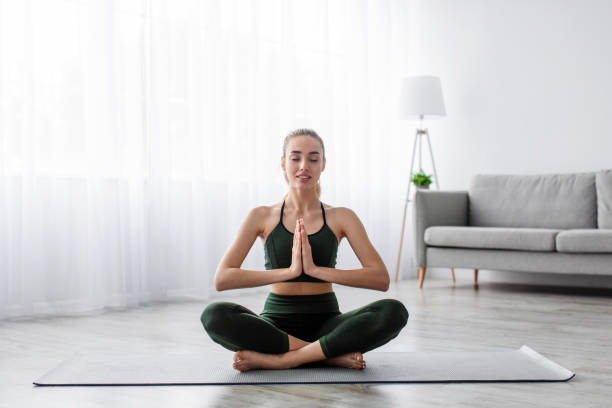Introduction
Today, we discuss beginner-friendly yoga poses for health. Beginning your yoga journey can be a life-changing experience, especially when you start with beginner yoga asanas for health. Yoga is not only a physical practice but also a mental and emotional practice, encouraging relaxation and mindfulness. If you are a beginner, it’s essential to start with basic yoga poses that challenge your body in terms of strength, flexibility, and balance without forcing it. Yoga poses can be practiced at various levels and, therefore, can be beneficial for individuals with different degrees of physical fitness. This article lists some beginner yoga poses that can improve general health and also serve as a guide to help you ease into your wellness journey.
How To Understand Yoga Benefits in Life

Before exploring individual poses, it is essential to recognize the numerous benefits of yoga practice. Practicing beginner yoga poses for health benefits helps with flexibility, strength, balance, and a relaxed mind. Frequent practice of yoga can increase mental clarity and emotional stability, ultimately benefiting both the physical and mental aspects of individuals. Yoga also helps improve posture, decrease chronic pain, and strengthen immunity. Yoga enables you to cultivate a deeper connection with your mind and body, fostering overall well-being. That multidimensionality makes yoga a perfect practice for anyone seeking to maintain and improve their overall health.
Mountain Pose (Tadasana)
Tadasana (Mountain Pose): a standing foundation pose, maintaining correct body posture. During the festive atmosphere of the upcoming season, this yoga pose for health will boost beginners’ mindfulness and grounding. How to practice Mountain Pose: Stand tall with your feet together, arms hanging at your sides, and weight distributed evenly between both feet. Draw up through your thighs, and lift your chest, letting your shoulders melt away from your ears. Take this reminder to dig your heels in and feel the ground beneath you, grounding you. In addition to physical stability, it also provides a mental centering and focus, making it a good starting pose for any yoga practice.
Dog Pose (Adho Mukha Svanasana)
Downward-Facing Dog (Adho Mukha Svanasana) is a pose that most people will recognize and is excellent for stretching and strengthening the entire body. YOGA POSE FOR HEALTH: THIS IS A BEGINNER-FRIENDLY POSE THAT IMPROVES CIRCULATION AND RELIEVES TENSION. To enter this pose, start on all fours, with your hands shoulder-width apart and knees hip-width apart. With your toes tucked under, lift your hips toward the ceiling, straightening your legs into an inverted V. Push your heels toward the ground, with your head supported between your arms. Feel free to stay here for a few breaths, noticing as your hamstrings stretch and your back releases some of its tension. This pose works well for revitalizing the body and settling the mind.
Cat-Cow Stretch (Marjaryasana-Bitilasana)
“Cat-Cow Stretch: A fluid progression to open the spine and increase flexibility. The back stretch is a beginner-friendly yoga asana that helps eliminate back tension and enhance posture. Start on all fours, with wrists under your shoulders and knees under your hips. Breathe in as you arch your back, lifting your head and tailbone toward the sky (Cow Pose). Then exhale as you arch your spine, bringing your chin to your chest and pulling your belly button toward your spine (Cat Pose). Repeat this sequence several times, following your breath with your movement. This gentle practice is a great way to increase spinal mobility and reduce stress.
Child’s Pose (Balasana)

Balasana, also known as Child’s Pose, is a restorative pose that encourages relaxation and reflection. This is a very beginner-friendly yoga asana for health that comforts the mind while also releasing stress. To enter Child’s Pose, kneel on your mat with your big toes touching and knees wide apart. Come to your knees as you sit back on your heels and fold forward to rest your forehead on the mat. Place your arms in front of you or by your sides. Concentrate on your breath, and with every exhale, feel free to melt deeper into the pose. Child’s Pose can be comforting and safe, making it an excellent pose for relaxation and mental clarity in any yoga practice.
Warrior I (Virabhadrasana I)
Warrior I, or Virabhadrasana I, is a dynamic pose that cultivates strength and confidence. This easy pose for health activates the legs, core, and arms while also working on focus and balance. And Warrior I: You go from a standing position, stepping one foot back to hold the front knee at a 90-degree angle. Bring your arms overhead, palms facing each other, and lift with hips squared toward the front. O U T W A R D — Hold this pose for several breaths, feeling the strength in your legs and the openness in your chest. Warrior I supports physical strength and power while also cultivating a sense of control and resolve.
Tree Pose (Vrksasana)
Tree Pose (Vrksasana)—a balancing pose that encourages concentration and grounding. It promotes mindfulness and being aware of your body. To practice Tree Pose, stand up tall and begin to shift your weight onto one foot. Press the sole of the opposite foot into the inner thigh or calf of the standing leg (do not place the foot on the knee). Bring your hands to your heart center or overhead. To do this, focus your gaze on a fixed point to spot where you are. Remain in the pose for a few breaths, then switch sides. Tree Pose improves balance and concentration, bringing satisfaction to any yoga practice.
Paschimottanasana (Seated Forward Bend)
Seated Forward Bend, or Paschimottanasana, is a soothing pose that stretches the spine and hamstrings. Yoga poses for health: This beginner-friendly pose promotes relaxation and introspection. To do this pose, start by sitting on a mat with your legs extended in front of you. So, inhale and elongate your spine, and exhale to hip-hinge it forward and reach for your feet. As you fold over, keep your back straight and try to go for your feet or shins. Stay here for a few breaths, allowing your body to sink into the stretch. Seated Forward Bend promotes feelings of calm and releases tension in the back and legs.
Bridge Pose (Setu Bandhasana)
Bridge Pose (Setu Bandhasana) is a supported, gentle backbend that opens the front and strengthens the back of the body. If you need a yoga pose without breaks, this health pose brings you back and opens up the spine. Spinal bends bend over slightly and help relax the nerves. To move into Bridge Pose, lie on your back with your knees bent and your feet hip-width apart. Plant your feet in the ground and raise your hips to the ceiling, keeping your shoulders and head on the mat. Weave your fingers underneath your back for extra support, and hold the pose for several breaths. Bridge Pose strengthens the back and legs while opening the heart and soothing the emotions.
Corpse Pose (Savasana)

Corpse Pose, also known as Savasana, is a pose of ultimate relaxation, where the body and mind come together to integrate the practice’s benefits. This is the easiest pose for maintaining health, and yoga is also beneficial for cultivating mindfulness and relaxation. As a restorative pose, Savasana involves lying your body flat on your back with your arms extended by your sides, palms facing up. If you need to, close your eyes and breathe, letting your body relax and melt. Practice this for a few minutes and release all tension and stress. Savasana is an essential element of every yoga session, as it allows you to extend your peace and awareness.
Ways to Stay Active by Including Yoga in Your Daily Life
For yoga to truly be beneficial, you must incorporate it into your daily routine to fully reap the health benefits of beginner yoga poses. Begin with small time frames, say 10-15 minutes of practice daily. Plan a calming environment in your home and aura to avoid distractions and make time for practice. You can attend online classes, download yoga apps, or practice by yourself. Make sure to practice consistently so that you can gradually extend your practice time and progress in your sessions. With consistent practice, you will achieve increased flexibility, strength , and mental clarity.
Conclusion
Finally, one option on the path to yoga for health is by practicing basic yoga forms. Jumping right into advanced poses will make your body and mind suffer instead. Keep in mind that yoga is individual; listen to your body and proceed at your own pace. “Share the growth process and feel the surprising impact of yoga on you!” Whatever you are seeking, yoga can be a great addition to your life that you enjoy, leading to health benefits that can last long into the future and can pull together the mind, body,, and spirit into greater health.

